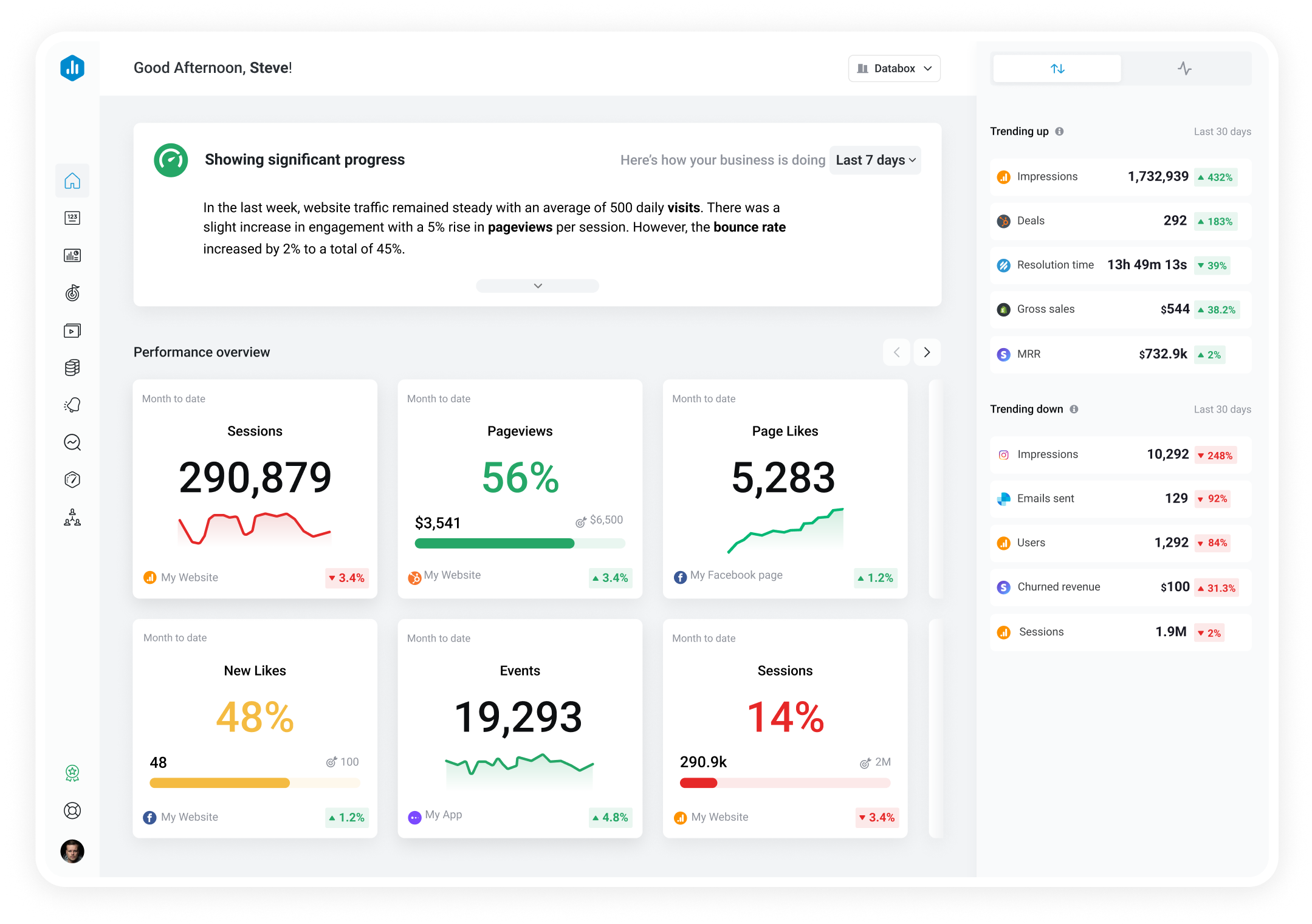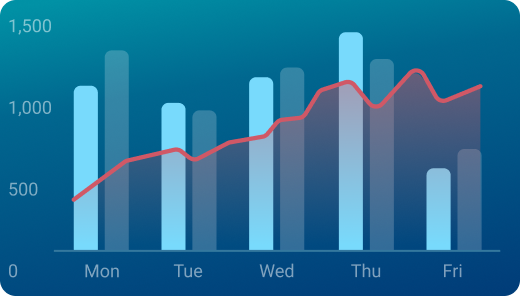Track all of your key business metrics from one screen
GET STARTED
 Shopify
Orders by Tag
Shopify
Orders by Tag Orders by Tag is a metric in Shopify that allows you to track the number and value of orders based on assigned tags. This gives you insight into customer behavior and trends, allowing you to make data-driven decisions on product offerings and marketing strategies.
With Databox you can track all your metrics from various data sources in one place.

Used to show comparisons between values.
Databox is a business analytics software that allows you to track and visualize your most important metrics from any data source in one centralized platform.
To track Orders by Tag using Databox, follow these steps:
 Goals
Goals Scorecards
Scorecards Metric Digest
Metric Digest Metric Builder
Metric Builder Data Calculations
Data Calculations Performance Screen
Performance ScreenShopify dashboard template which will give you insights and a complete control over your Shopify store.

